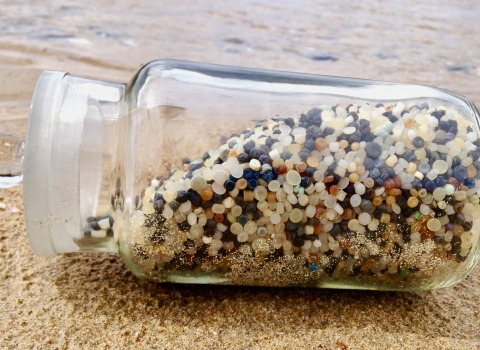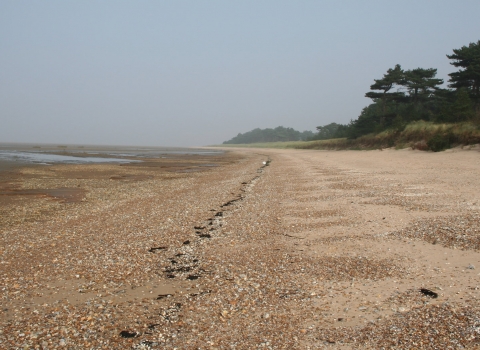Tiny pieces of plastic
About the size of a lentil, nurdles (or mermaid's tears) are tiny plastic pellets used as a way to transport the material to manufacture. Often washed up on beaches, nurdles can have a devasting impact on wildlife. Everything from birds to fish mistake them for food as they look like fish eggs and in time they make their way up the food chain, killing larger sea animals. Toxic chemicals can also transfer from the environment onto the microplastics (at much higher concentrations than in the environment), and then to the animals that then eat them. The plastic itself can also contain toxic chemicals.
You can help us by hunting for nurdles on beaches and reporting how many you find.
Get involved and hunt for nurdles on the beach
Manx Wildlife Trust is interested in monitoring how many nurdles are on our beaches, which beaches have more on and if the time of year affects the numbers. This could help us with our studies of marine wildlife as well. We can then pass this information onto the Manx Government and any other interested people.
What do they look like?
They are small pieces of plastic, usually clear, white or a yellowy colour. They vary in size from 3-5mm and are round in shape, very like the size and shape of a lentil!
Where do you find them?
Look at the highest part of the beach above the high tide line; this is the highest line of seaweed on the beach. Nurdles are so small and light, they wash up and are blown up to the top of beaches, especially where there is lots of sand.


